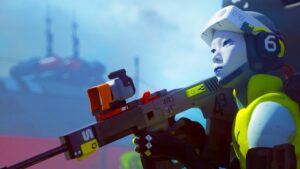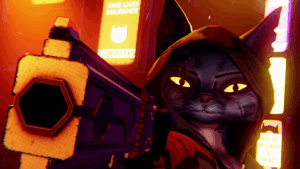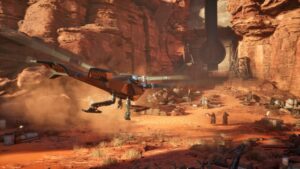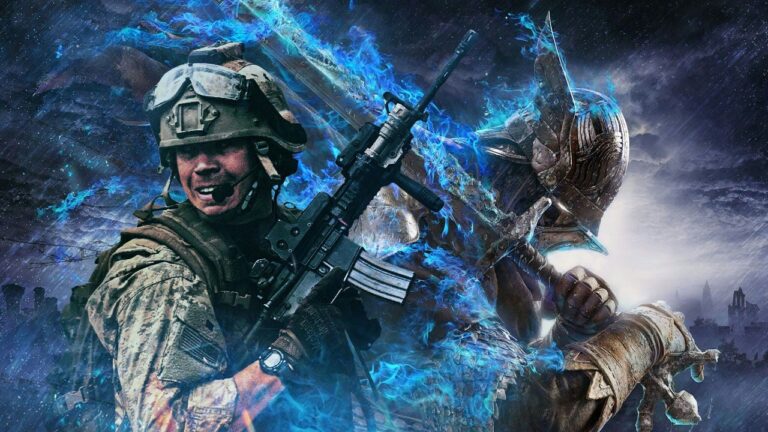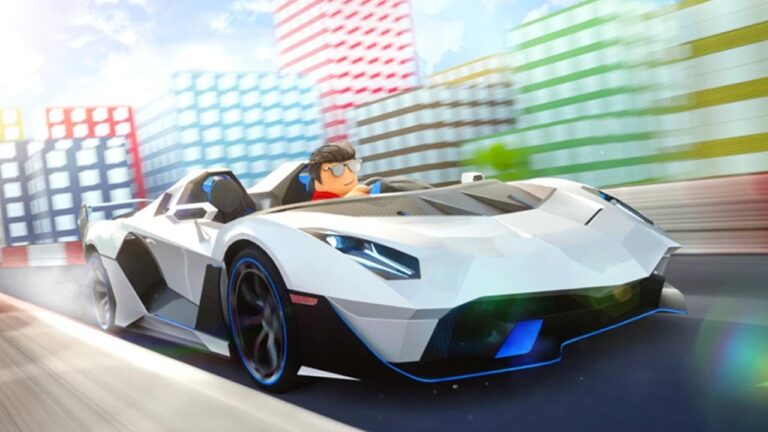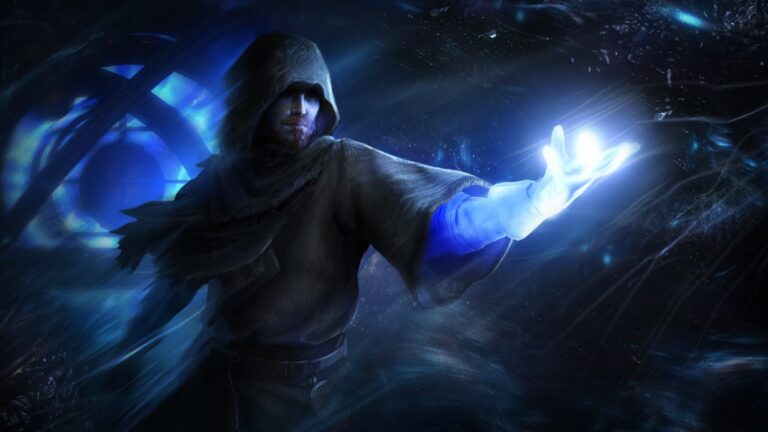Introduction: A Complex New World from a Renowned Developer
I’ve been intrigued by MindsEye ever since its announcement, but as the debut project from former Grand Theft Auto lead Leslie Benzies approaches release, I found myself with more questions than answers. Benzies’ studio, Build A Rocket Boy, is venturing into uncharted territory with this game—combining linear, cinematic storytelling with expansive exploration and innovative user-generated content. It’s a multi-layered experience that raises many questions: How do all these elements come together? Can players freely explore MindsEye’s sprawling city? And what happened to the studio’s previous ambitious project, Everywhere?
Setting the Scene: Redrock, a Near-Future Spin on Las Vegas
MindsEye is set in the city of Redrock, a fictional location inspired by Las Vegas but reimagined for the near future. Once a desert metropolis famous for casinos and entertainment, Redrock’s economy has shifted away from gambling toward becoming a hub for high-tech companies. As Benzies explains, “Many corporations are relocating here for tax incentives and to escape scrutiny—it’s also a place where people go into hiding.”
The city itself is fully mapped, covering a 9×9-kilometer area, with a playable zone of 6×6 kilometers. Driving through Redrock offers a clear GTA-like experience: a believable road network, a bustling downtown, suburban neighborhoods, and more remote settlements. Executive producer Misha Shmakov notes that the city’s demographics mirror real-world cities, with varied income areas, diverse populations, and different vehicle types across neighborhoods.
A Society at a Crossroads: Technology and Its Impact
The narrative of MindsEye explores a society on the brink—where technology’s influence is profound and potentially perilous. Redrock is depicted as a social experiment, with major tech firms wielding significant control over everyday life. AI-powered police bots patrol the streets, and a central surveillance system called ‘CARE’ monitors citizens constantly.
Initially, these ideas were speculative, but recent developments in AI and large-language models have made them increasingly relevant. Benzies shares his perspective: “Back when we started, these concepts were far-out. Now, with AI advancing so rapidly, they feel even more pressing.” The story reflects this tension, portraying Redrock as a city at a technological crossroads—questioning whether these innovations will lead to a utopia or a dystopia. Benzies asks players directly: “What do you think will happen? Will society thrive or fall apart as these technologies evolve?”
Meet Jacob Diaz: The Protagonist with a Shattered Past
Players step into the shoes of Jacob Diaz, a former military drone pilot suffering from memory loss due to a MindsEye chip implant. After leaving the military and having his chip decommissioned, Diaz’s memories are fragmented. His new job as a security guard at Silva Industries—the company behind the MindsEye technology—serves as a starting point for uncovering his past and uncovering deeper conspiracies.
The game’s story unfolds through a series of missions, similar to the structure of Mafia games. Benzies explains that linear storytelling was a deliberate choice: “Open-world storytelling can be tricky, and we wanted players to experience Jacob’s journey at specific moments—joining him at a point in his life and leaving him there, without distractions like gambling or side quests that could break immersion.”
Action, Chase Sequences, and Futuristic Firepower
One of the missions showcased involved Diaz escorting Silva Industries’ CEO, Marco Silva, to a campaign rally. Using a personal VTOL aircraft, Diaz arrives on the scene, only to see Silva kidnapped by armed gang members. The chase that follows combines vertical and ground-based travel, with high-speed driving through desert landscapes and engaging in combat.
The handling mechanics lean toward an arcade feel—fast and responsive but requiring skill to master at high speeds. The combat itself is familiar but enhanced with futuristic weapons, including a powerful energy cannon capable of destroying vehicles and enemies with explosive blasts. While standard firearms are effective, the real fun begins with the energy cannon, which provides a satisfying punch and demonstrates the evolving arsenal throughout the campaign.
Strategic Combat: Using Drones and Hacking for Tactical Advantage
MindsEye’s combat system emphasizes tactics over brute force. Enemies are smart—they will flank, push, and adapt to your strategies. To counter this, Diaz can deploy his drone—initially a reconnaissance tool—that can scan environments, highlight enemy positions, and hack robotic foes to fight for him.
As the game progresses, players can control the drone directly, using its functions to scout, disable enemies, or turn robotic enemies against their allies. This adds a layer of strategy, encouraging players to think tactically rather than relying solely on guns.
Side Missions and the Creative Potential of Build.MindsEye
Beyond the main story, MindsEye offers optional side missions that deepen players’ understanding of Redrock’s world. These include flashbacks to Jacob’s military days or encounters with gangs involved in criminal deals. These missions are not just narrative filler—they serve as gateways into Build A Rocket Boy’s creative tools.
The game features Build.MindsEye, a powerful set of creation tools accessible anytime during gameplay. Players can experiment with assets like vehicles and characters, modify their positions, and even script entire scenarios. Senior Level Designer Josh Mattyas demonstrates how easy it is to add custom elements—like copbot trucks—into existing missions, creating unique and personalized experiences. The ultimate goal is to empower players to craft their own high-quality content, bridging the gap between casual creation and professional-grade game development.
Platform Availability and Future Plans
At launch, MindsEye will be available exclusively on PC, primarily due to control considerations. Benzies notes that controllers are more challenging to implement effectively but promises that console versions are planned for the future. Once on consoles, the experience might differ slightly, with some features adjusted for controller input.
Meanwhile, players on all platforms will receive regular updates—new missions, content, and enhancements—via the existing Play.MindsEye menu, which serves as a hub for additional activities and side content.
Exploring Redrock Freely with ‘Free Roam’ Mode
Although the main campaign is linear, the game includes a Free Roam mode allowing players to explore Redrock at their leisure. Set after the events of the story, this mode puts you in the role of a character called the Preacher, where you can drive around, interact with gangs, and undertake smaller missions.
Shmakov explains that more features will be added over time, including potential multiplayer options. The developers see Free Roam as a vital part of post-launch content, encouraging ongoing engagement and community building.
Connecting MindsEye with the Larger ‘Everywhere’ Universe
Build A Rocket Boy’s ambitious vision extends beyond MindsEye. While MindsEye functions as a standalone game, it also integrates into the broader project called Everywhere—a large-scale multiplayer platform. Benzies shares that although Everywhere experienced a beta phase and was temporarily shut down, the team has learned valuable lessons from its community.
The tools created for MindsEye are designed to be versatile and user-friendly, applicable across multiple projects. Benzies emphasizes that these creation tools are theme-agnostic, meaning players can build anything from sci-fi worlds to fantasy realms with the same core set of assets and scripting systems.
Finally, Benzies notes that MindsEye’s story and content will influence and be integrated into the evolution of Everywhere, ensuring that both projects remain interconnected parts of a larger narrative universe.
